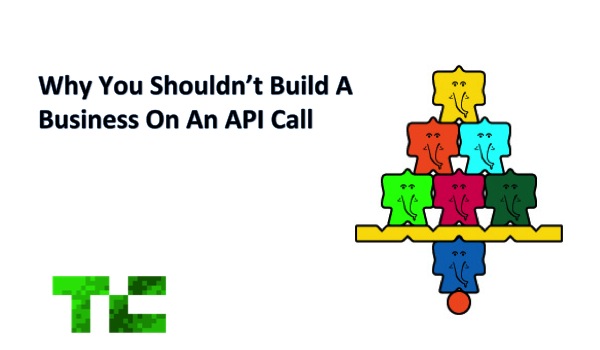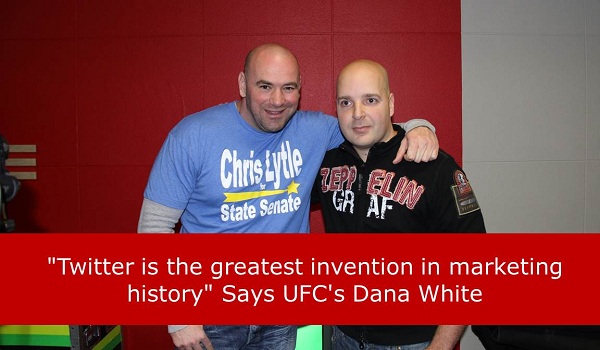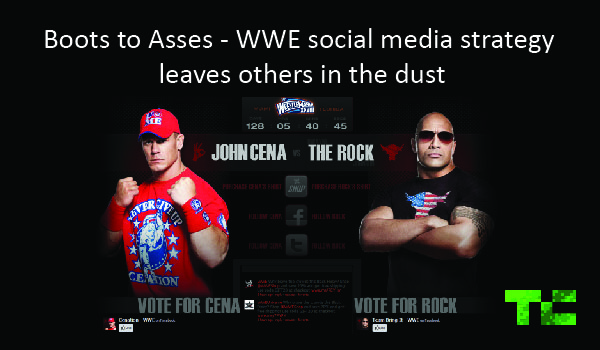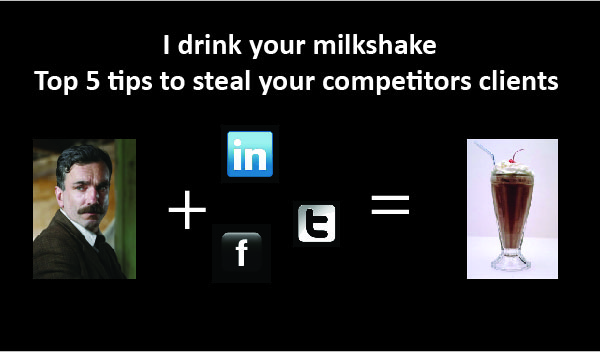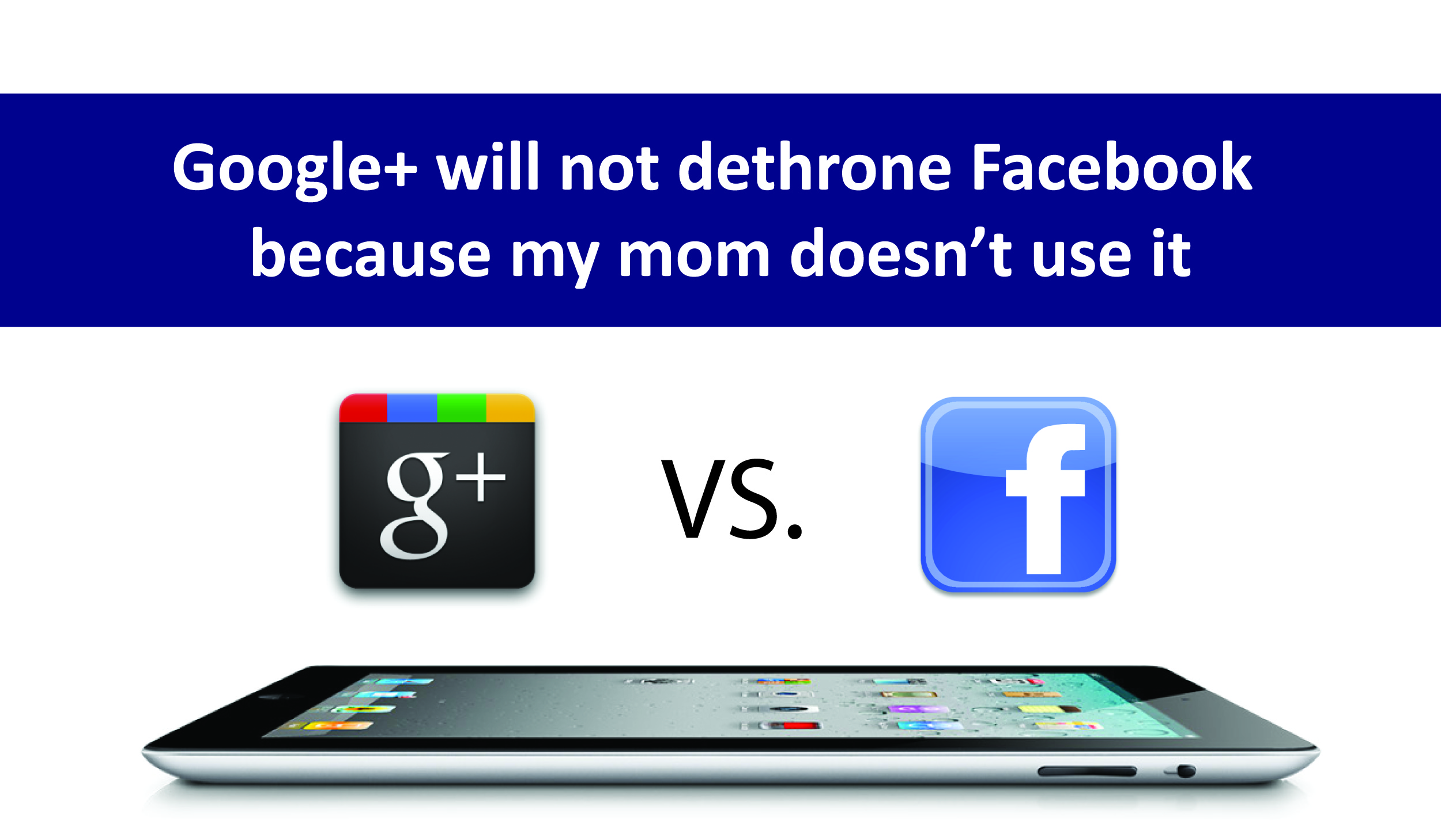I am constantly amazed by the number of startups that build applications and take a huge business risk by building their company on an API call. Countless apps, particularly social apps, have popped up through the last 24 months that have taken data from other systems and re-displayed it in their systems. While there is widespread usage of APIs (and not for a moment am I suggesting that people not use them at all), I just think that start-up founders consistently underplay the business risk. The risk is clear, if the data dries up so does your business. For all that have created apps based largely on API calls, consider what would happen if that information fire hose wasn’t there anymore. The companies who provide these APIs may not disappear, but it will definitely be a game-changer. The changes to Twitter’s API should serve as a warning sign and an important reminder. Countless third-party Twitter apps have found all their hard work rendered useless by the latest release of their 1.1 API, as the vital flow of data has come to a halt or slowed greatly. Some might blame Twitter and say how dare they shut down the fire hose to the community. I think a lot of responsibility needs to be placed on the developers who consciously build on an ecosystem they knowingly can’t control. Two examples cited directly by Michael Sippey on the Twitter blog are Tweetbot and Echofon. In the words of Sippey, “Nearly eighteen months ago, we gave developers guidance that they should not build client apps that mimic or reproduce the mainstream Twitter consumer client experience. And to reiterate what I wrote in my last post, that guidance continues to apply today.” I am not here to parse the he said she said, just to offer a warning to startups building their business on an API. If your startup could have its throat cut by a TOS (Terms of Service) change or API change, you shouldn’t just brush inherent risks to your company under the carpet. Moving beyond the risks to your company you should also consider what the true value you are providing to your users. In many cases (especially in the case of social), apps merely have a new UI on top of the information of Twitter or Facebook. On the contrary, there is something amazing to be said for companies who build into the ecosystem and allow their functionality to be seamless across a broader group of applications. The best example that comes to mind is 37 Signals universe and the way they have built and integrated into countless other useful applications. They allow vital business information to...
Read MoreI got to sit down and interview Dana White ahead of UFC 140. The event takes place on December 10th in Toronto, Canada and like every UFC event, heavily hyped via social media. Over the past 3 years, Dana White and the UFC have built a very strong social media presence. I wanted to speak to the head of the UFC himself and get some more detail on what he thinks of Twitter and other social media tools. Dana goes on to outline how he got into Twitter, how he uses it to help his business, what are the pitfalls and benefits. Amy Jo Martin of Digital Royalty, who helps build social media strategies for business such as the UFC had this to say about Dana White and his use of Twitter. “Dana White was the first sports executive to see the power of these new communication channels. From day one, Dana and the UFC have treated social media channels as a dialogue vs. a monologue.” Digital Royalty...
Read MoreOver the past year the WWE has continued to push the social media envelope by integrating Twitter and Facebook further into its regular broadcasts. Dwayne “The Rock” Johnson, now a cross-over star in both the WWE and Hollywood, cut a promo on WWE Raw to hype the upcoming pay-per-view “Survivor Series”. During that promo, the Rock quickly coined a new catchphrase “Boots to Asses” and said it was now trending worldwide. Before he mentioned it there was no mention of it on Twitter. Shortly after he said it, not only did it start a new chant throughout the arena, but it proved that Mr. Johnson was prophetic as minutes later the term “Boots to Asses” was trending worldwide. One might say this is a one off, but for anyone observing what the WWE has been up to this can be seen as only a small part of a much larger social media strategy. In the last year, the WWE has bolstered it’s already strong web presence with a very savvy social media offensive. Now every performer who appears on WWE TV has their own Twitter handle which they use to build a fan following and actually continue storylines started from the show. During the broadcast, whenever a wrestler heads to the ring, their Twitter handle is prominently featured next to their name on the screen graphics. Their strategy is obvious and effective, providing a method to allow their show to be more interactive and leverage casual fans to tune in more regularly especially when something eventful is on the screen. Throughout the show, it is quite common to hear announcers talking about whether something is trending worldwide. Some wrestlers who are trying to increase their standing in the company have actually taken to social media to build an audience. Zack Ryder and his self-styled ”Jersey Shore” persona created a series of YouTube videos to drive interest. To his credit, not only has he been successful driving nearly 100,000 people to become subscribers on Youtube, but he also has 300,000 followers on Twitter. He essentially went out and built a new fanbase for himself and received more airtime and interest as a result. Wrestlemania is by far the biggest event held by the WWE. To hype the main event, they have already launched a separate site to highlight their main fight, John Cena vs. Dwanye “The Rock” Johnson, and to encourage fans to choose whose side they’re on. The site is integrated with both Twitter and Facebook pages. On each side they have attracted huge audiences. Here is the tale of the tape so far, and it is pretty impressive. Dwayne “The Rock” Johnson John Cena Twitter Followers 1.6m...
Read MoreHere, if you have a milkshake, and I have a milkshake, and I have a straw. There it is, that’s a straw, you see? You watching?. And my straw reaches acroooooooss the room, and starts to drink your milkshake… I… drink… your… milkshake! – There Will Be Blood. Daniel Plainview was brilliantly acted character played by Daniel Day Lewis and this scene won him the Oscar. It does say something about competition and going after your competitors’ resources. Your competitor’s most valuable resource is their customers. So how do you “Drink Their Milkshake”?. These strategies are really suited to a David and Goliath approach. Here are 5 really simple steps (some are quite aggressive) to target and win over your competitors customers in a digital age. Here are some top tips: 1. LinkedIn – LinkedIn is a powerful tool for understanding competitive information. There are a number of different ways to effectively poach your competitors clients. a. See what their sales force is doing – Watch what the sales reps from your competitors are doing, and see who they are connecting with. It is likely that those people are either their leads or customers. Target those people and begin discussions of your own. b. Infiltrate their LinkedIn groups – Most of the people who manage LinkedIn groups quite honestly don’t pay attention to who they let in. Some of the people there are likely either users or power users. You have to be discriminating to who you begin to contact, as usually these groups are teeming with consultants and members of that company. It can be a quick way to generate a really quick list. 2. Twitter – It is very simple to go after your competitor’s customers in Twitter. The rule is simple: if they are following your competitor, it is likely they are customers. So the next step is easy – you follow them 500-1000 at a time. You wait a week and see who follows you back. By virtue of them following you back, they have self-identified that they might be interested in trying a different service. At the very least, you see what topics are resonating and can derive new messaging from that. 3. Facebook – Fans and people who actively post on their wall are obvious targets. Depending on the product or service you can begin to run ads for anyone who “likes” your competitor. This is a hyper targeted approach to catch the eye of these potential clients. 4. Event Sign-ups – Many companies are using 3rd party sign-up tools for their events or webinars. Search and scrape any sign-up sheet to see the...
Read MoreMy parents have become an informal guidepost for technology adoption. Whenever I come home to visit them, they usually ask me if I have heard about some new technology. It is that point that I know that the tech they mention has reached a certain level of critical mass. My parents are by no means tech neophytes, but conversely, they aren’t cruising tech blogs attending regular tweet-ups. Facebook is a regular part of my mom’s life. I often get messages and Wall comments from her, and in quite a few instances, our Facebook communication has replaced picking up a telephone. So, this weekend I asked her whether she uses Google+ or has heard about it. She said she had heard some buzz about it, but had no intention to change from Facebook. I started to think about this, and wondered if this trend of one would hold true in other demographics. I also began to wonder whether Google+ might be in for a slog trying to convert my mom and others who share similar usage patterns and demographics. Before I make such a bold blustery claim, we should evaluate why my mom uses Facebook. The biggest reason? Because everyone else uses Facebook too. Facebook has built a competitive advantage that will make it difficult to overcome, especially in the older demographic. The younger generation has less of an issue trying something new and flipping between multiple services (Google+, Twitter, Foursquare, etc.). One could easily make the argument that Myspace was well ahead of Facebook and they caught up. This is a totally different game due to the three principle ways my mom uses Facebook: 1. Playing Games with friends – Facebook has become an impressive platform for non-immersive pastime games I consider myself a gamer, but still play Facebook games from time to time. For my mom, on the other hand, Facebook’s game offerings are often at the perfect skill level for her and others in her generation. These games also attract users who don’t have the time to commit to an engrossing game and just want a five minute distraction. Facebook Scrabble is one of my mom’s favourite games, and she plays with all of her friends from the comfort of her iPad. Facebook quickly become one of the strongest gaming platforms out there over the past 3 years. The Google game strategy is emerging via the Google App store, but currently is both under-developed and not tightly integrated into Google+. 2. Seeing what we are up to – With a new baby in the family, my mom is quick to check for photos or keep in touch with friends. I haven’t felt the need to really post pictures on both services (Facebook and Google+) because when posting...
Read More